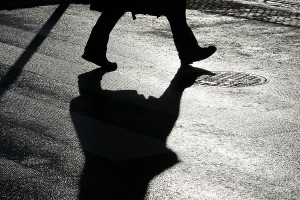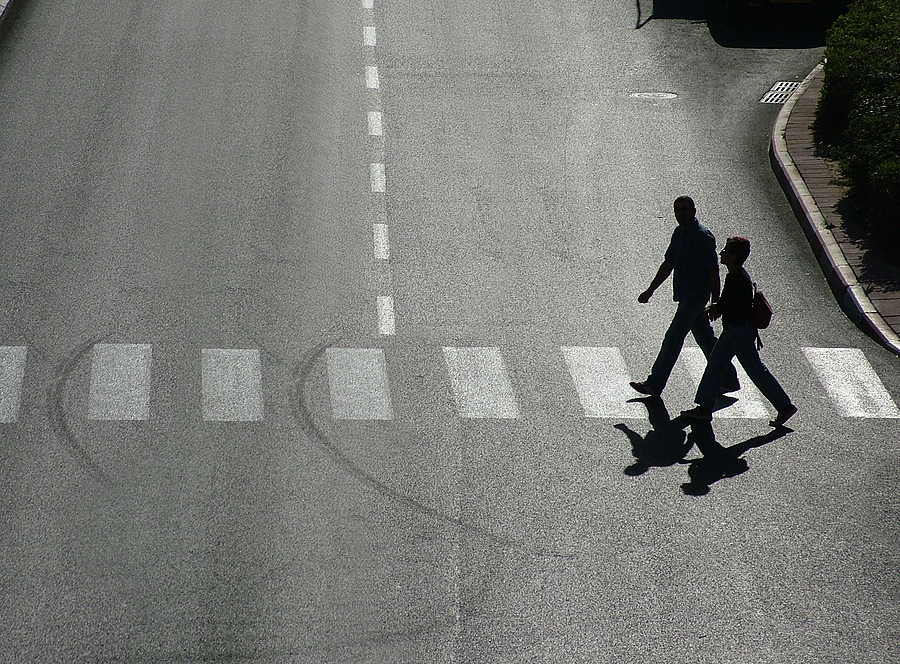More Americans are walking and bicycling to work, which is great as a means to reducing the risk of heart disease, obesity, and stress. But there’s a grim side to this otherwise healthy change in behavior: More pedestrians and cyclists are now involved in traffic accidents.
Pedestrians accounted for 14 percent of traffic deaths in 2013, according to a report released Thursday by the Government Accountability Office, up from 11 percent in 2004. For cyclists, those figures increased from 1.7 percent in 2004 to 2.2 percent in 2013. What’s really happening in the chart above is that overall traffic deaths have fallen sharply, from about 43,000 in 2004 to about 33,000 in 2013, while pedestrian and cyclist deaths have remained flat.
 One explanation may be that more Americans are biking and walking to work. In 2005, the first year for which Census data are available, 3.3 million said walking was their primary mode of getting to work and 530,000 said they used a bicycle. In 2013, those numbers had increased to 4 million and 860,000, respectively—and probably understate the case, according to the GAO report, since it doesn’t count people who bike to a train station, say, or walk to work once in a while.
One explanation may be that more Americans are biking and walking to work. In 2005, the first year for which Census data are available, 3.3 million said walking was their primary mode of getting to work and 530,000 said they used a bicycle. In 2013, those numbers had increased to 4 million and 860,000, respectively—and probably understate the case, according to the GAO report, since it doesn’t count people who bike to a train station, say, or walk to work once in a while.
Pedestrian and cyclist safety, meanwhile, hasn’t always received a lot of attention, and GAO interviews with transportation officials and advocacy groups suggest that there’s a lack of data around how to tailor safety efforts. To begin to fill that void, here’s some information that the GAO report turned up from the National Highway Traffic Safety Administration’s Fatality Analysis Reporting System:
- 69 percent of pedestrian victims and 87 percent of cyclists were men.
- Most of the deaths occurred between 3 p.m. and midnight.
- One in three pedestrians and one in five cyclists had a blood- alcohol content of more than .08, which is considered alcohol- impaired in all 50 states.
Another complaint that the GAO elicited is that the competing interests of local and regional interests can pose a challenge to safety plans. A state department of transportation, for instance, is generally concerned with moving people across larger distances and less likely to prioritize cyclists and pedestrians making short trips. On an optimistic note, the GAO noted so-called zero-death campaigns in New York, San Francisco, and Washington, D.C., that take a comprehensive approach to traffic safety.
Those aren’t the only programs. The U.S. Department of Transportation oversaw $676 million in spending on programs to promote pedestrian and cyclist safety in 2013. But if Americans continue to show preference for living and working in denser urban settings, those efforts will need to increase.
Was this article valuable?
Here are more articles you may enjoy.


 Baltic Sea Countries to Check Insurance on Tankers Moving Russian Oil
Baltic Sea Countries to Check Insurance on Tankers Moving Russian Oil  US House Task Force Releases ‘Blueprint’ for Federal AI Responsibility
US House Task Force Releases ‘Blueprint’ for Federal AI Responsibility  Coming Soon to Florida: New State-Fed Program to Elevate Homes in Flood Zones
Coming Soon to Florida: New State-Fed Program to Elevate Homes in Flood Zones  AccuWeather’s US Winter Forecast Calls for a Temperature Roller Coaster
AccuWeather’s US Winter Forecast Calls for a Temperature Roller Coaster 